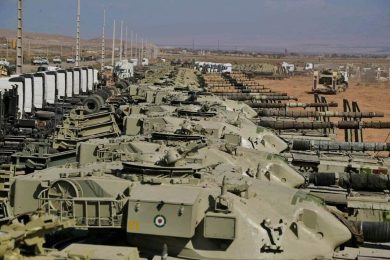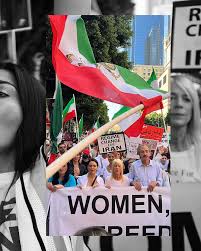The struggle for freedom and equality in Iran has reached a historic turning point, with Iranian women emerging as the driving force behind a transformative movement. For decades, women in Iran have faced systematic oppression, from compulsory hijab laws to legal discrimination and social restrictions. Yet, despite the Islamic Revolutionary Guard Corps (IRGC) and the regime’s harsh crackdowns, Iranian women are leading protests that challenge not only gender inequality but also authoritarian rule.
The “Women, Life, Freedom” movement, ignited by the tragic death of Mahsa Amini in September 2022, has become a global symbol of resistance. Women from all walks of life—students, journalists, mothers, and activists—are risking their lives to demand fundamental rights. Their protests have redefined the meaning of freedom and equality in Iran and have inspired global solidarity.
This article explores:
• The historical context of women’s resistance in Iran.
• How protests are reshaping the fight for freedom and equality.
• The role of digital activism in amplifying women’s voices.
• The impact of women-led movements on Iran’s future.
• How the global community can support Iranian women in their quest for justice.
1. A History of Resistance: The Role of Iranian Women
A. Women’s Rights Before and After the 1979 Revolution
Before the 1979 Islamic Revolution, women in Iran had made significant strides in education, employment, and legal rights. However, after the revolution, the Islamic Republic imposed:
• Compulsory hijab laws.
• Gender segregation in schools and public spaces.
• Discriminatory legal codes, including unequal rights in marriage, divorce, and child custody.
These restrictions did not silence women; instead, they fueled decades of resistance.
B. Key Moments of Women-Led Resistance
Women have played a central role in every major protest movement in Iran:
• 1999 Student Protests: Women students protested restrictions on university campuses.
• 2009 Green Movement: Women protested against election fraud and demanded democratic reforms.
• 2017-2019 Economic Protests: Women linked economic grievances to gender oppression.
• 2022 “Women, Life, Freedom” Movement: Sparked by Mahsa Amini’s death, this movement placed women’s rights at the heart of the struggle for democracy.
2. The 2022 Uprising: Redefining Freedom and Equality
A. The Death of Mahsa Amini: A Catalyst for Change
Mahsa Amini, a 22-year-old woman, was arrested by Iran’s morality police for allegedly violating hijab regulations. Her death in custody ignited nationwide protests, with women leading the charge.
• Women removed their hijabs in public, risking arrest and violence.
• Slogans like “Women, Life, Freedom” became rallying cries.
• Protests quickly expanded, demanding systemic change beyond gender issues.
B. Women’s Protest Tactics: Acts of Defiance
Iranian women have redefined protest by turning everyday actions into symbols of resistance:
• Cutting their hair in public as a symbol of mourning and defiance.
• Dancing and singing in public spaces, acts forbidden under the regime.
• Leading funeral marches, transforming them into anti-regime protests.
These acts of defiance have challenged the regime’s patriarchal control and inspired global solidarity.
3. The Role of Digital Activism
A. Social Media: A Tool for Resistance
Despite internet shutdowns and digital surveillance by the IRGC, Iranian women have used social media to:
• Share real-time footage of protests.
• Document state violence and human rights abuses.
• Build global solidarity through hashtags like #MahsaAmini and #WomenLifeFreedom.
B. The Power of Hashtags
Hashtags have become powerful tools in connecting Iran’s struggle with the global community:
• #MahsaAmini: Shared millions of times, bringing global attention to Iran’s human rights crisis.
• #WomenLifeFreedom: Became a global feminist slogan, uniting activists worldwide.
• #FreeIran: Used by the Iranian diaspora to demand international action.
C. Exiled Voices Amplifying the Struggle
Masih Alinejad, an exiled Iranian journalist, has used platforms like Twitter and Instagram to:
• Lead the #MyStealthyFreedom campaign, encouraging women to share photos without hijabs.
• Expose the IRGC’s human rights abuses to global audiences.
• Mobilize international pressure on the Iranian regime.
4. The IRGC’s Brutal Response to Women-Led Protests
A. Tactics of Suppression
The IRGC has responded to women-led protests with brutality:
• Arbitrary arrests and imprisonment of women activists and journalists.
• Torture, sexual abuse, and forced confessions in detention centers.
• Violent crackdowns on peaceful protests, including the use of live ammunition.
• Cyber warfare to disrupt communication and spread misinformation.
B. Targeting Women Leaders
Women who emerge as leaders face severe consequences:
• Narges Mohammadi, a human rights defender, remains imprisoned for her activism.
• Nasrin Sotoudeh, a lawyer advocating for women’s rights, was sentenced to 38 years in prison and 148 lashes.
• Sepideh Gholian, a journalist, continues to face harassment and imprisonment for covering labor protests.
Despite these risks, Iranian women persist, showing that fear cannot silence the demand for freedom.
5. How Iranian Women Are Redefining Freedom and Equality
A. Challenging Patriarchal Norms
Iranian women’s protests have redefined freedom by:
• Demanding bodily autonomy and the right to choose.
• Rejecting the patriarchal laws that dictate every aspect of their lives.
• Redefining feminism in an Islamic context, challenging global stereotypes.
B. Connecting Gender Equality to Broader Freedom
Women have shown that freedom and equality are inseparable:
• Gender equality is not just a women’s issue—it’s a democratic issue.
• A free Iran cannot exist without the liberation of women.
• Women’s leadership has proven that inclusive movements are stronger and more sustainable.
C. Building Intersectional Movements
Iranian women have built movements that include:
• Ethnic minorities like Kurdish, Baluchi, and Arab women.
• Working-class women, linking economic inequality to gender oppression.
• LGBTQ+ rights, connecting the struggle for gender equality with broader human rights.
6. The Global Impact of Iranian Women’s Protests
A. Inspiring Global Feminist Movements
The “Women, Life, Freedom” movement has:
• Inspired feminist movements across the Middle East and beyond.
• Reignited conversations about gender-based oppression in authoritarian contexts.
• Become a symbol of universal resistance, transcending borders.
B. Mobilizing the Iranian Diaspora
The Iranian diaspora has played a crucial role in:
• Organizing global protests in major cities like Berlin, London, and New York.
• Lobbying governments to adopt sanctions and human rights resolutions.
• Amplifying the voices of women inside Iran, ensuring they are heard on the global stage.
C. Shaping International Policy
The movement has pressured governments to:
• Sanction the IRGC for human rights violations.
• Provide asylum for persecuted activists.
• Support digital freedom initiatives to bypass the regime’s cyber repression.
7. How the World Can Support Iranian Women’s Fight
A. Diplomatic Pressure and Sanctions
• Governments must continue to sanction the IRGC and Iranian officials responsible for gender-based oppression.
• Targeted sanctions should focus on those perpetrating violence against women.
B. Support for Digital Freedom
• Tech companies must provide secure communication tools to help women activists bypass surveillance.
• VPNs, satellite internet, and encrypted apps are vital for safe activism.
C. Amplifying Iranian Women’s Voices
• Media organizations must prioritize coverage of Iranian women’s protests.
• Cultural platforms, including films, literature, and art, should highlight women’s stories from Iran.
D. Providing Humanitarian Support
• Governments should fast-track asylum applications for activists at risk.
• Human rights organizations must provide financial and legal aid to the families of imprisoned activists.
Conclusion: Women Will Define Iran’s Future
The power of protest led by Iranian women is redefining freedom and equality, not just for Iran but for the world. These women have proven that resistance is relentless and that freedom cannot be given—it must be won.
Join Our Newsletter!
Stay informed with the latest updates, news, and ways to take action in the fight for justice and global security. Sign up now to get updates delivered straight to your inbox!





